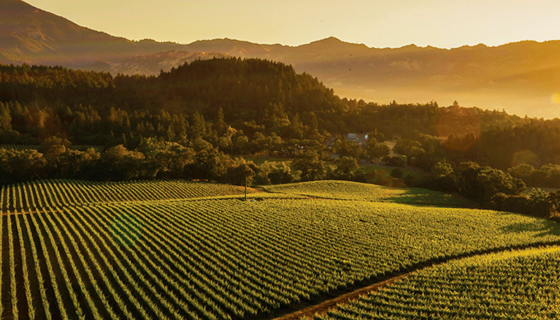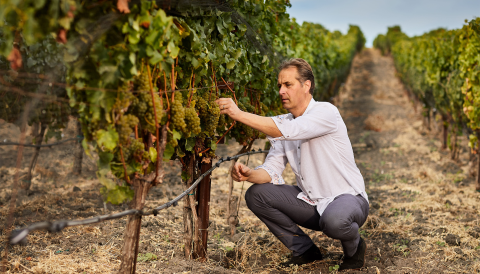From $26.95, CA$40, £45 (RRP, from September), JP¥6,500 (RRP, from mid-September), AU$194.99
Lovers of California history will know Grgich Hills for a few reasons. Firstly, Miljenko (Mike) Grgich was responsible for the 1973 Ch Montelena Chardonnay that won the Judgment of Paris. A year after the 1976 tasting, Grgich partnered with Austin Hills to open Grgich Hills Estate. Secondly, in 1998, Grgich pointed out to Dr Carol Meredith of UC Davis that Zinfandel looked a bit too much like the Plavac Mali from his native Croatia to be a coincidence. This led to a collaboration between UC Davis and the University of Zagreb and revealed that Zinfandel was the Croatian Crljenak Kaštelanski, parent of Plavac Mali … Unsurprisingly for an estate with such love for the variety, the Zinfandels from Grgich Hills are very good.
In 2000, Grgich began handing off winemaking and vineyard responsibilities to his nephew Ivo Jeramaz, who had been working alongside him since 1986. Jeramaz (pictured below) credits Grgich with his love of farming and winemaking, and with encouraging his passion for natural farming systems. Under Jeramaz, Grgich Hills has promoted organic, biodynamic and regenerative practices and their link to continuously improving wine quality (NB they are no longer Demeter-certified though they do still utilise biodynamic preparations). On the day we met, Jeramaz seemed to vibrate with the conviction that farming was the way to improve the health of our world, drawing constant parallels between humans and vines.
‘With conventional farming, you make a junkie of a plant. When people try to convert vineyards and they see losses in those first years, that’s like getting clean – of course, you go through hell’, says Jeramaz.
Grgich Hills was certified organic in 2006 but has been farming organically since long before that. In March of this year, they were certified Regenerative Organic (ROC). This involved certifying 366 acres (148 ha) across four distinct AVAs – Calistoga, Carneros, Rutherford and Yountville – as well as the southern region of American Canyon. (Find a map of Napa’s AVAs here.) Every one of Grgich’s wines, from the entry tier to the premium, will have ROC labels with the release of the 2023 vintage.
Conversion to organics, and now to regenerative farming, has some knock-on effects – one of which is that it is now easier for the estate to dry-farm or, in very sandy soils, to water sparingly. Jeramaz attributes this to the fact that conventional fertilisers are often salts – potassium chloride, sodium nitrate, ammonium nitrate – and these all dehydrate plant tissue and dry out soil. ‘What would happen if you ate a pound of prosciutto?’ Jeramaz asks. ‘You’d have to drink a gallon of water.’
Though some think it’s harder to dry-farm under regenerative farming principles – especially given the no-till aspect – Jeramaz disagrees. He believes that weeds will compete for a vineyard’s water only in the first few years of a vine’s life. After that, the vegetation insulates the soil. ‘If it’s 90 degrees outside, cultivated soil can be 150. Soil with grasses will be around 75. And untilled soil has a much higher water-holding capacity.’
Napa is not generally a place where dry farming and no-till go hand in hand, but at Grgich’s vineyards in Carneros and American Canyon (just south of Carneros) – where they grow the fruit for the 2020 Fumé Blanc – they do.
I mention all of this because I believe it is important. Not because I am planet-first (though I am) but because, like Jeramaz, I believe that the proof of the pudding is in the eating.
The 2020 Fumé Blanc, even though it was grown in one of the hottest seasons on record, carries its 13.5% alcohol lightly. For me, this wine reaffirms a belief in the balance created through dry farming. This balance comes from a naturally smaller canopy in hot, dry years – the canopy is the source of all sugar creation – so a smaller canopy means less potential for sugar creation and lower potential alcohols – not such a bad thing for 2020. This wine also retains its refreshing and sprightly acidity and a bundle of fresh flavours.
Winemaking for the Fumé Blanc is quite simple: grapes are pressed and juice goes through spontaneous fermentation in large, neutral French oak foudres and barrels. It’s then held on lees for 6 months before being bottled. The wine then sees another year in bottle before release. I scored it 16.5/20 and my note reads:
Pale lemon. The nose is fresh and lemony with struck-match flintiness and an aroma of chive blossom. Fresh acidity on the palate with phenolic texture and a lingering flavour of white peach, lime and grass – refreshing! The alcohol clocks in at 13.5% – but the wine carries it lightly. Not much in Napa you can get your hands on for this price anymore – certainly not with this much attention paid to farming. GV Drink 2023–25
While this wine isn’t cheap, I find it to be a stunning value, well worth seeking out. It illustrates the harmony that can exist between timeless, classically styled wines and future-focused farming. It is forward-thinking. It has a great story. It provides hope. And, best of all, it is delicious.
The 2020 is widely available in the US; UK importers ABS Wine Agencies are expecting stock next week and retail stockists are likely to include VINVM, Pacific Wines and Pull the Cork; Canadian retail stockists include Crestwood Fine Wine & Spirits, Wine and Beyond at Windermere, and Sherbrooke Liquor in Edmonton, and Metro Liquor and Zyn Wine Merchants in Calgary. In the coming weeks the wine will be available in Japan (via importers Wine to Style) and South Korea (imported by Nara Cellar).
All photos courtesy Grgich Hills Estate.
Members can find reviews of dozens more Grgich Hills wines in our tasting note database.















